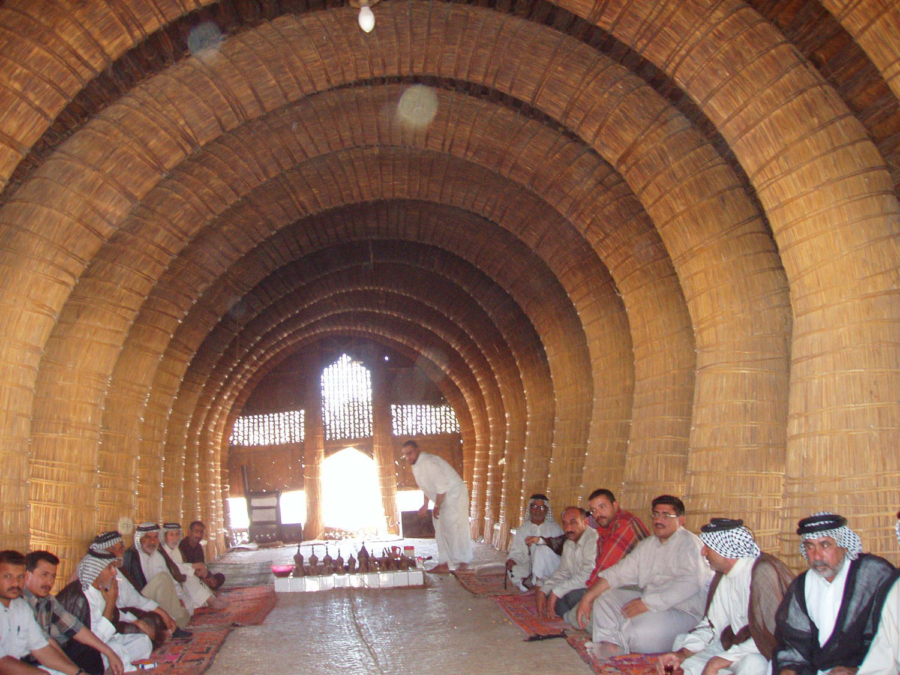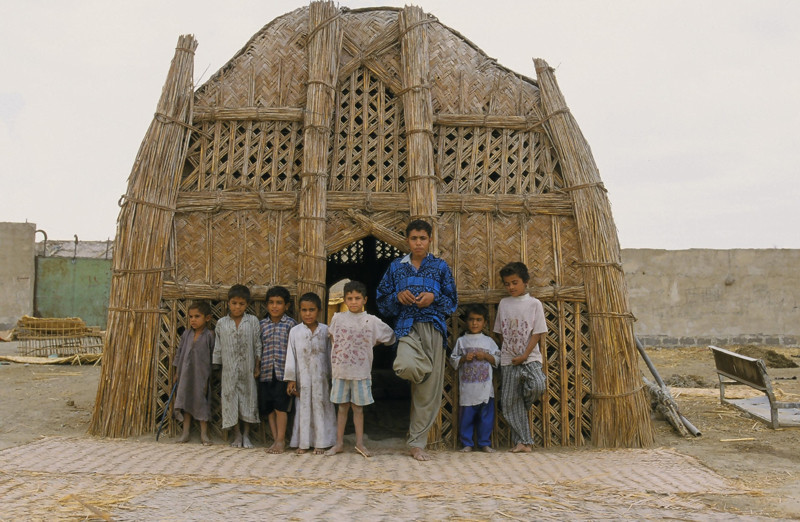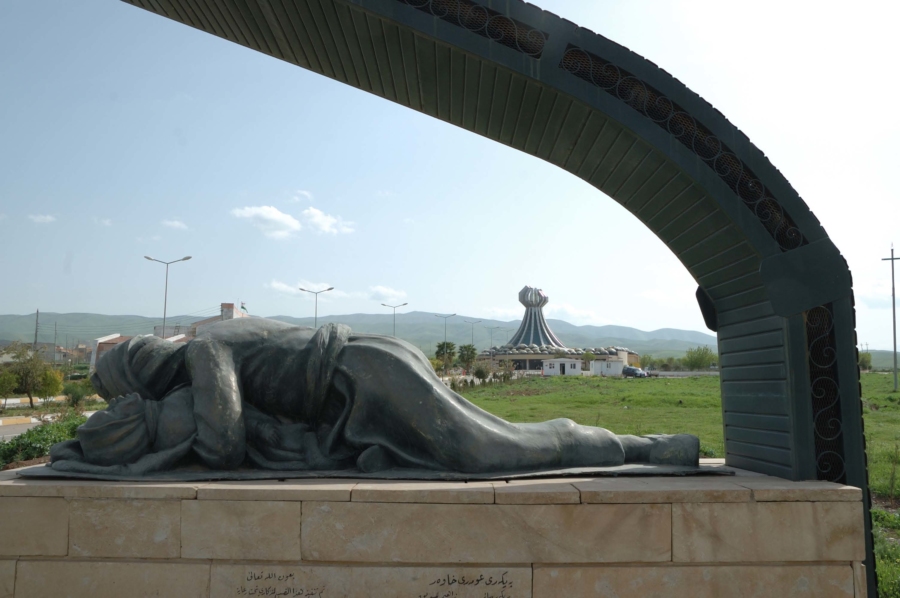Mudhif: houses are made from reeds and located in Iraqi Marshes in the south of Iraq. The houses are built in a certain way that uses some reparative patterns to form the walls and the structure. A mudhif is a special type of sarifa; a structure made from reeds that grow naturally in the marshlands and is used by the village sheik as a guest-house. Other types of reed dwelling, such as a raba (with entrances at both ends and used as a family dwelling) or a bayt (strictly a single-room dwelling) are typically smaller than a mudhif and may be used for residential and other purposes.
In the construction of a mudhif, reeds are bundled and woven into thick columns; larger and thicker reeds are bent across and tied to form parabolic arches which make up the building’s spine. These arches are strengthened by the pre-stressing of the columns, as they are initially inserted into the soil at opposing angles. A series of arches define the building’s form. Long cross beams of smaller bundled reeds are laid across the arches and tied. Woven mats of reeds form the building envelope. Some of the mats are woven with perforations like a mesh to allow light and ventilation.














